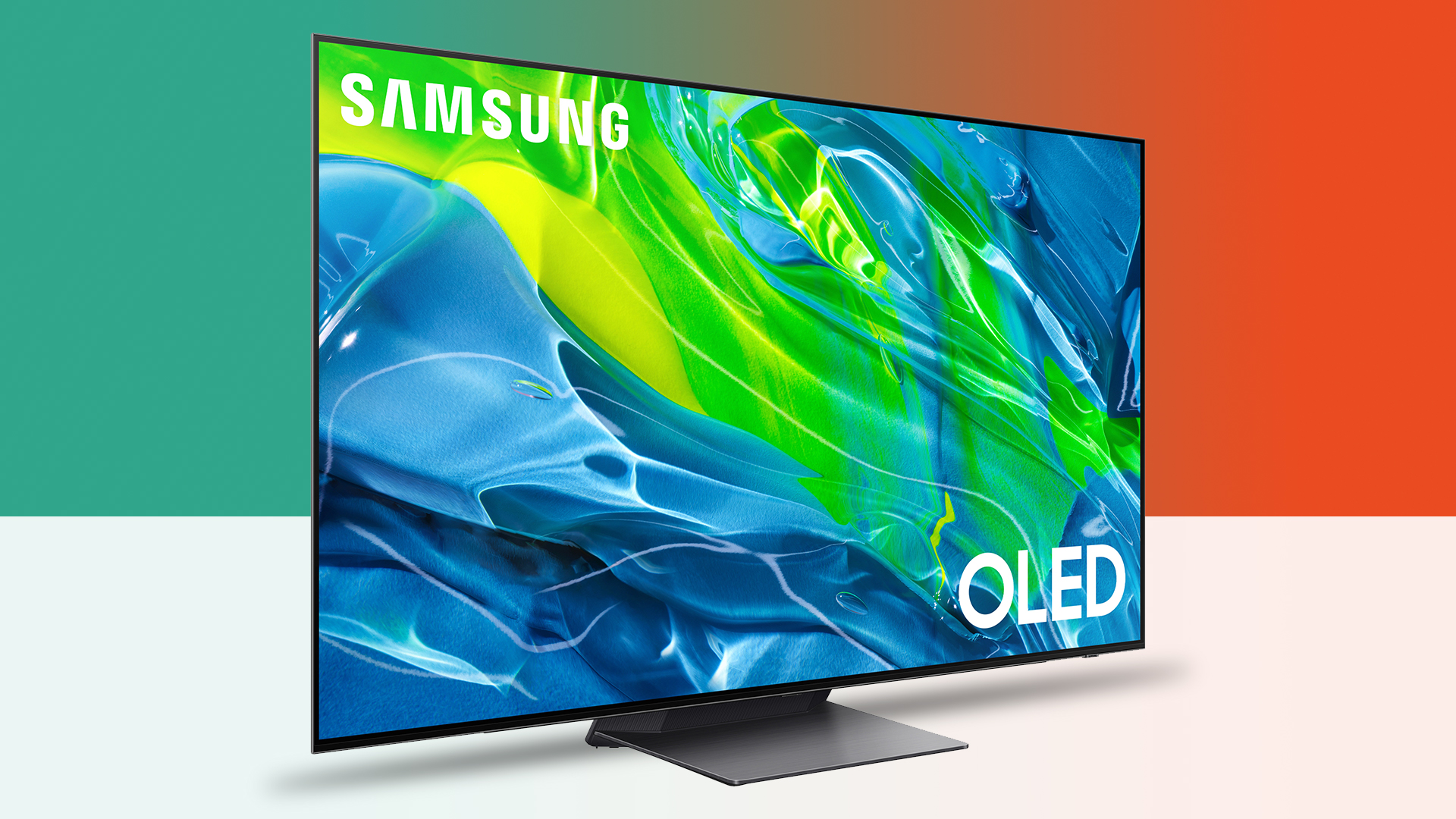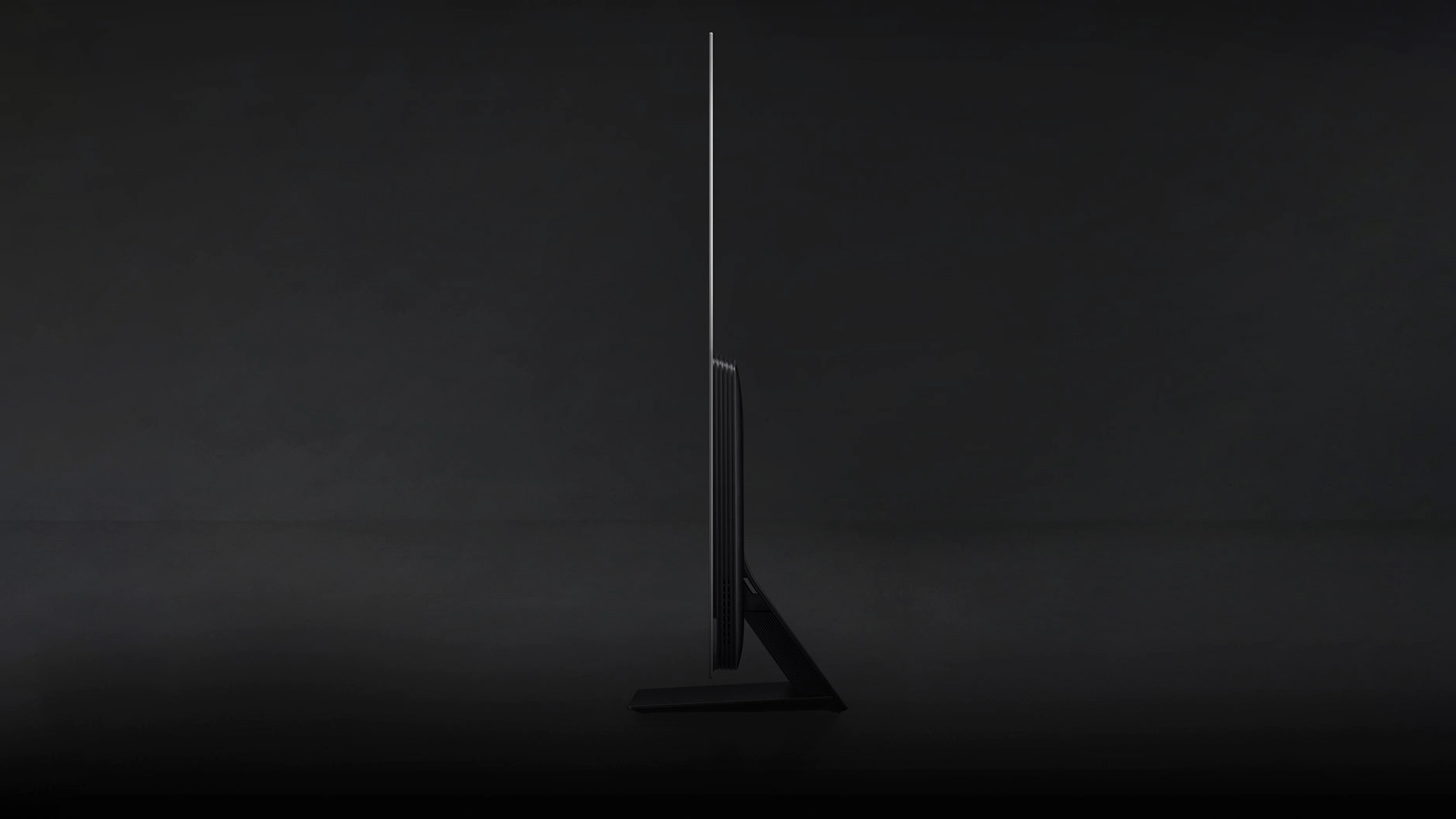

Samsung has finally unveiled its first TV using QD-OLED technology: the Samsung S95B. It will come in 55-inch and 65-inch sizes, and will be available from April, which is great news – we feared that it might slip in the second half of the year.
Even better news is the price, which is $2,199 for the 55-inch version and $2,999 for the 65-inch version according to the official Samsung US website (UK and Australian prices have yet to appear, but based on how Samsung's other TVs are price, we'd guess that UK prices will be around £2,500 for the 55-inch and £3,300-£3,500 for the 65-inch).
Obviously, that's far from being cheap, but it's a much lower price than we feared, and is really going to shake up the best OLED TVs if the QD-OLED screen tech is as good as initial impressions suggest.
For comparison, we're expecting the 55-inch LG G2 OLED TV to be around the same price, but the Samsung S95B will almost certainly have the edge on colour reproduction, sound quality and perhaps even brightness.
And it may be only a few hundred dollars more than the LG C2, which is its biggest competition in the OLED space – but we'd expect an even more clear improvement in image quality from the Samsung S95B over the C2 there (again, based on first views of the QD-OLED technology). For AV enthusiasts, the price hike is likely to be more than worth it – we're expecting this to be one of the best TVs of the year.
There are lots of details about the S95B that we now know that we didn't before, including the fact that it'll use a new 'LaserSlim' design that's similar to other OLED TV. It'll also include Samsung Object Tracking Sound tech for spatial positioning of sounds from its built-in speakers, and will have four HDMI 2.1 ports for gaming.

In this bizarrely dark photo, you can just about make out how thin the Samsung S95B is – and that it has a thicker section at the bottom for the techy parts.
What is QD-OLED?
QD-OLED is a new way of making OLED TVs that's designed to improve on some of the weaknesses that other OLED tech has. Traditional OLED TVs use sets of red, green, blue and white pixels to create their colours, with the white pixels adding brightness for HDR pop – but also slightly reducing the pop of their colours compared to what they could achieve.
Get all the latest news, reviews, deals and buying guides on gorgeous tech, home and active products from the T3 experts
QD-OLED TVs use a panel that's all blue pixels, with a colour filter of Quantum Dots (as used in QLED TVs, including the best Samsung TVs) in front, to convert the light into green and red to create a mix of colours. Quantum Dots are extremely efficient at filtering colours, so this allows more brightness from the pixels directly, and also the potential for wider and bolder range of colours.
And QD-OLED will still give the per-pixel lighting control and perfect black tones that OLED is famed for – it should just give even more dazzle at the brighter end of things. When Samsung Display first announced QD-OLED screens in January, we covered some of the specifics on how they beat regular OLED.
You might notice that Samsung's official S95B page just refers to it as an OLED TV, which is confusing – if I were Samsung, I'd want to make it clear that I'm using advanced new technology to justify a higher price than many OLED TVs. The Samsung page does confirm that it uses the Quantum Dot technology further down, but it's an oddly subdued way to announce that you might have a TV revolution on your hands…
In any case, we can't wait to get this tested – we'll bring you our verdict as soon as we get our hands on one.

Matt is T3's former AV and Smart Home Editor (UK), master of all things audiovisual, overseeing our TV, speakers and headphones coverage. He also covered smart home products and large appliances, as well as our toys and games articles. He's can explain both what Dolby Vision IQ is and why the Lego you're building doesn't fit together the way the instructions say, so is truly invaluable. Matt has worked for tech publications for over 10 years, in print and online, including running T3's print magazine and launching its most recent redesign. He's also contributed to a huge number of tech and gaming titles over the years. Say hello if you see him roaming the halls at CES, IFA or Toy Fair. Matt now works for our sister title TechRadar.